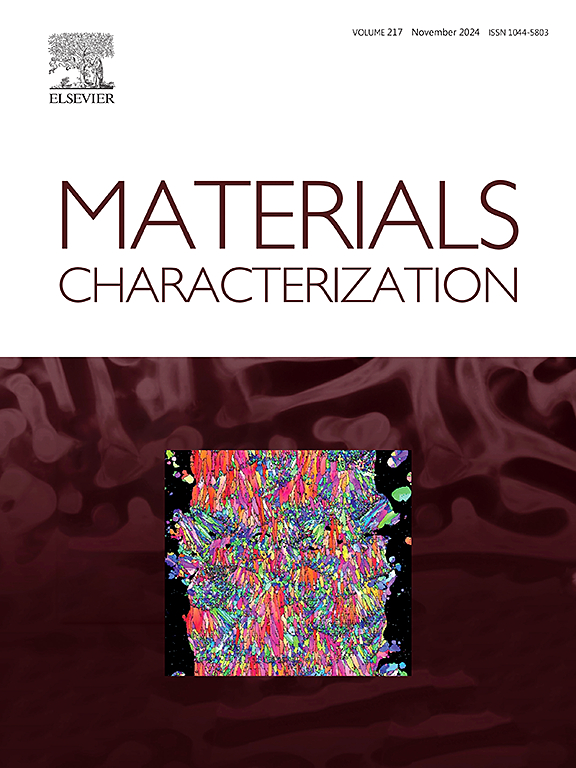Evaluation of biocompatible NiTi/ZrO2 joint brazed with AuSi fillers: Interfacial evolution, mechanical properties, and corrosion resistance
IF 5.5
2区 材料科学
Q1 MATERIALS SCIENCE, CHARACTERIZATION & TESTING
引用次数: 0
Abstract
Reliable NiTi/ZrO2 joints with superior corrosion resistance were fabricated through a two-step process: Pre-metallization of ZrO2 ceramics with NiTi filler, followed by brazing with an AuSi eutectic filler. The interfacial microstructure of the metallization layer and NiTi/ZrO2 joints were thoroughly characterized. The influence of temperature on the interfacial microstructure, mechanical properties and corrosion resistance was more significant. As the temperature rose, the NiSiTi nanocrystalline layer went through three stages: formation, thickening, and decomposition. During this process, the amount of Si decreased, and the Ni49Si37Ti14 particle phase became more evenly dispersed, and some Au(s,s) transformed into Au2Ti. Collectively, these changes in the Au(s,s) contributed to the enhancement of the joint strength. Moreover, at 460 °C for 10 min, the Au(s,s) had the least amount of phase, leading to the formation of the least amount of primary cells, and the NiTi/ZrO2 joint exhibited the best corrosion resistance. The findings indicated that AuSi fills hold great potential for achieving high corrosion resistance in implantable devices.
用AuSi填料钎焊的生物相容性NiTi/ZrO2接头的评价:界面演变、力学性能和耐腐蚀性
采用两步工艺制备了具有优异耐腐蚀性的可靠的NiTi/ZrO2接头:用NiTi填料对ZrO2陶瓷进行预金属化,然后用AuSi共晶填料钎焊。对金属化层和NiTi/ZrO2接头的界面微观结构进行了全面表征。温度对界面组织、力学性能和耐蚀性的影响更为显著。随着温度的升高,NiSiTi纳米晶层经历了形成、增厚和分解三个阶段。在此过程中,Si含量减少,Ni49Si37Ti14颗粒相分散更加均匀,部分Au(s,s)转变为Au2Ti。总的来说,这些Au(s,s)的变化有助于增强关节强度。此外,在460℃加热10 min时,Au(s,s)的相量最少,导致初级细胞的形成最少,并且NiTi/ZrO2接头具有最佳的耐蚀性。研究结果表明,AuSi填料在植入式器件中具有很高的耐腐蚀性。
本文章由计算机程序翻译,如有差异,请以英文原文为准。
求助全文
约1分钟内获得全文
求助全文
来源期刊

Materials Characterization
工程技术-材料科学:表征与测试
CiteScore
7.60
自引率
8.50%
发文量
746
审稿时长
36 days
期刊介绍:
Materials Characterization features original articles and state-of-the-art reviews on theoretical and practical aspects of the structure and behaviour of materials.
The Journal focuses on all characterization techniques, including all forms of microscopy (light, electron, acoustic, etc.,) and analysis (especially microanalysis and surface analytical techniques). Developments in both this wide range of techniques and their application to the quantification of the microstructure of materials are essential facets of the Journal.
The Journal provides the Materials Scientist/Engineer with up-to-date information on many types of materials with an underlying theme of explaining the behavior of materials using novel approaches. Materials covered by the journal include:
Metals & Alloys
Ceramics
Nanomaterials
Biomedical materials
Optical materials
Composites
Natural Materials.
 求助内容:
求助内容: 应助结果提醒方式:
应助结果提醒方式:


